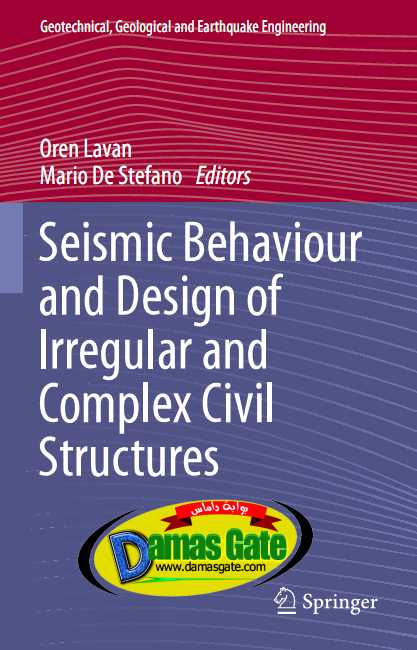Seismic Behaviour and Design of Irregular and Complex Civil Structures

Preface
Real structures are almost always irregular as perfect regularity is an idealization
that very rarely occurs. Structural irregularities may vary dramatically in their
nature, and, in principle, the concept of irregularity is a fuzzy one. Because of
the complex behaviour of such structures under earthquake excitations, it is not
surprising that, in spite of the large research efforts in plan irregular building
structures dating back to the 1970s, even in recent years, many papers have been
devoted to a better understanding of seismic response both of simplified one-storey
and of multi-storey building models.
Of course, research interest has shifted from investigating elastic response to
inelastic response and, subsequently, to developing passive control design strategies,
which appear to be a suitable alternative to traditional design in order to mitigate
irregularity effects. Additionally, a number of studies have dealt with adequacy of
design specifications subscribed by major seismic codes and with issues arising
from use of analysis methods, such as pushover analysis; only few studies still are
devoted to investigating experimental response and effects of rotational components
of input ground motions.
Download
http://s18.alxa.net/s18/srvs2/02/001...Structures.rar